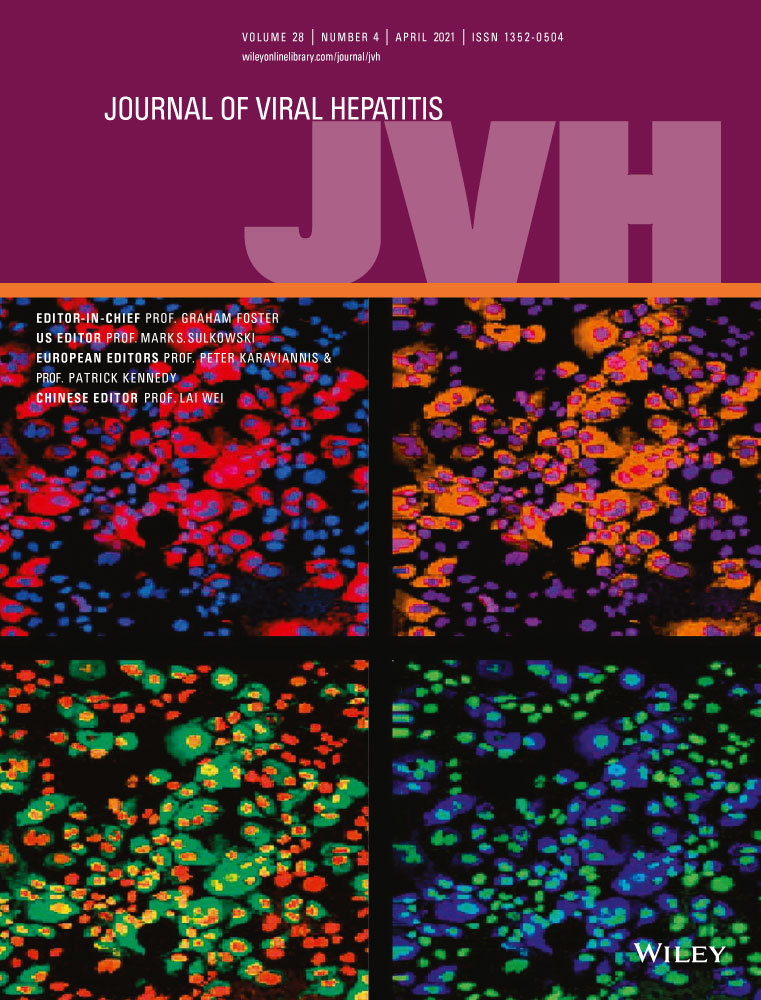Mortality in relation to hepatitis B virus (HBV) infection status among HIV-HBV co-infected patients in sub-Saharan Africa after immediate initiation of antiretroviral therapy
Funding information
This work was supported by the Agence Nationale de Rercheches sur le SIDA et les hépatites virales (ANRS) and SIDACTION, Paris, France. GMK also received doctoral funding from the ANRS. AMM received funding from National Institutes of Health NIAID T32AI007433 and NIAID R37AI058736. EPH received funding from National Institutes of Health NHLBI K01HL123349. Its contents are solely the responsibility of the authors and do not necessarily represent the official views of the NIH.
Abstract
It is unknown how past and active hepatitis B virus (HBV) infection affect immunorecovery and mortality in people with HIV who initiate tenofovir-based antiretroviral therapy (ART). Using data collected between 2008 and 2015, we studied people with HIV in sub-Saharan Africa initiating immediate ART in the Temprano randomized control trial. We classified participants into HBV groups at ART initiation: hepatitis B surface antigen (HBsAg)-positive with HBV DNA ≥ 2,000 IU/ml; HBsAg-positive with HBV DNA < 2,000 IU/ml; isolated HBcAb-positive; resolved infection (HBsAb-positive/HBcAb-positive); and HBV non-immune/vaccinated (HBcAb-negative). We compared square-root CD4-cell count increases using mixed-effect, non-linear regression adjusted for age, sex, baseline CD4 cell count, and HIV RNA. We compared all-cause mortality using Bayesian parametric survival regression. Among 879 participants, 24 (2.7%) had HBsAg with high HBV DNA, 76 (8.6%) HBsAg with low HBV DNA, 325 (37.0%) isolated anti-HBcAb, 226 (25.7%) resolved HBV infection and 228 (25.9%) HBV non-immune/vaccinated. We found no significant difference in CD4 cell increases between HBV-infection groups after adjustment (p = 0.16). Participants with HBsAg and high HBV DNA had the highest incidence of all-cause mortality (1.9/100 person-years, 95% Credibile Interval [CrI] = 1.0–3.4). By comparison, incidence rates of mortality were reduced by 57% (95%CrI = −79%, −13%), 60% (95%CrI = −82%, −12%) and 66% (95%CrI = −84%, −23%) in those who had isolated anti-HBcAb-positive, resolved HBV infection and HBV non-immune/vaccinated, respectively. In conclusion, individuals with HIV and past HBV infection or isolated anti-HBcAb-positive serology, much like HBV non-immune/vaccinated, experience lower mortality than those with HBsAg and high HBV DNA. Additional HBV-related management would not be necessary for these individuals.
CONFLICT OF INTEREST
The authors declare no competing interests.
Open Research
DATA AVAILABILITY STATEMENT
The data from the Temprano Study are owned by the ANRS. Original data can be requested by submitting a study proposal to the principal investigators of the study. The proposal format can be obtained from the corresponding author ([email protected] or [email protected]). The principal investigators of the study will check each proposal for compatibility with the general objectives, ethical approvals, and informed consent forms of the Temprano study, and potential overlap with ongoing work. This study contains original data. AB, GMK, DG, CD, RM, XA and SE had full access to all the data in the study and take responsibility for the integrity of the data and the accuracy of the data analysis.




